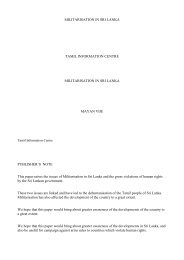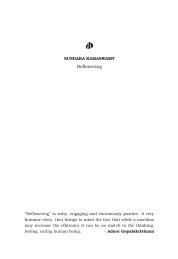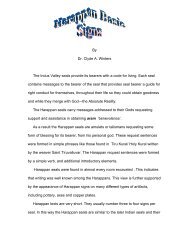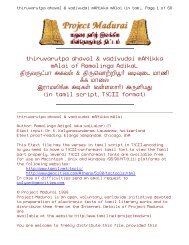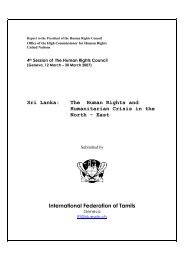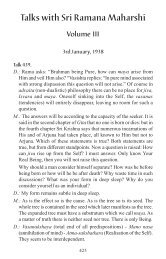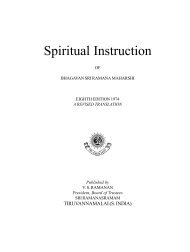Conflict in Sri Lanka: Ground Realities - Tamil Nation & Beyond
Conflict in Sri Lanka: Ground Realities - Tamil Nation & Beyond
Conflict in Sri Lanka: Ground Realities - Tamil Nation & Beyond
- No tags were found...
Create successful ePaper yourself
Turn your PDF publications into a flip-book with our unique Google optimized e-Paper software.
<strong>in</strong>ferior <strong>Tamil</strong> nation <strong>in</strong> policies of language, land alienation,education and employment.When the <strong>Tamil</strong> nation’s struggle for equal rights us<strong>in</strong>g nonviolentdemocratic methods, with<strong>in</strong> and outside the parliament,was subjugated with brutal force by successive S<strong>in</strong>ghalesedom<strong>in</strong>atedgovernments, the then democratically elected leadersof the <strong>Tamil</strong> nation realised that the establishment of a separateState <strong>in</strong> the traditional homeland of the <strong>Tamil</strong> people, the North-East region of the country, is the only way to live <strong>in</strong> this islandwith peace and dignity. This culm<strong>in</strong>ated <strong>in</strong> the <strong>Tamil</strong> UnitedLiberation Front (TULF), the then moderate democratic politicalparty of the <strong>Tamil</strong>s, pass<strong>in</strong>g a resolution for the <strong>Tamil</strong>s to <strong>in</strong>itiatetheir struggle to establish an <strong>in</strong>dependent, Sovereign, Secular,Socialist State of <strong>Tamil</strong> Eelam <strong>in</strong> their traditional homeland, theNorth-East of <strong>Sri</strong> <strong>Lanka</strong>.The resolution call<strong>in</strong>g for a separate state was passed at the TULF’sconvention held at Vaddukodai <strong>in</strong> 1976. It is now popularly calledthe Vaddukodai Resolution. <strong>Tamil</strong> people gave their mandate tothe TULF for this resolution, which was their platform, <strong>in</strong> theparliamentary elections <strong>in</strong> 1977. When the TULF’s non-violentstruggle for an <strong>in</strong>dependent state was crushed, the <strong>Tamil</strong> youthsopted for an armed struggle. This armed struggle is today takenforward by the Liberation Tigers of <strong>Tamil</strong> Eelam (LTTE).Until the LTTE was able to grow and evolve with the support ofthe <strong>Tamil</strong> people <strong>in</strong>to an equal armed formation to the <strong>Sri</strong> <strong>Lanka</strong>nsecurity forces (SLSF), and was able to successfully resist theSLSF’s occupation of the <strong>Tamil</strong> homeland, no serious ceasefireagreements (CFA) or <strong>in</strong>ternational community (IC) <strong>in</strong>volved peaceprocesses were <strong>in</strong>itiated. Such a CFA was signed <strong>in</strong> 2002 betweenthe <strong>Sri</strong> <strong>Lanka</strong>n government and the LTTE with the facilitation ofthe <strong>in</strong>ternational community (IC), specifically Norway.Although the CFA is still hold<strong>in</strong>g (after nearly 4 years) politicalkill<strong>in</strong>gs are not <strong>in</strong> short supply, which are blamed on both, the<strong>Tamil</strong> paramilitary forces aided and directed by the SLSF, andthe LTTE. Six rounds of peace negotiations, with the facilitation34



